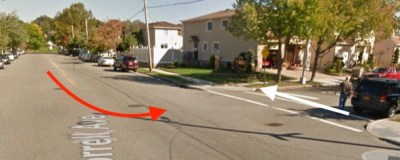Crash Data Show NYC Is Losing Ground on Vision Zero

After a four-month hiatus, City Hall is again updating its Vision Zero View map with new crash data, and through the first six months of 2016, traffic deaths rose slightly compared the same period last year. Through the end of June, 111 people lost their lives to traffic violence, up from 107 in the first half of 2015.
Drivers killed 58 pedestrians and 12 cyclists from January through June this year, compared to 63 pedestrians and five cyclists in the first six months of 2015.
The month of June was especially deadly, with 29 fatalities, wiping out what had looked like progress in the first five months of the year.
Traffic injuries, which are less prone to random variation, are also up from last year for pedestrians and cyclists, though Vision Zero View does not track injury severity. Motorists injured 7,110 people walking and biking through June, compared to 6,518 pedestrian and cyclist injuries during the same period in 2015 — an increase of 9 percent.
Injuries to pedestrians rose from 4,870 to 5,214 year to year, and injuries to cyclists increased from 1,648 to 1,896.
While traffic deaths declined in 2014 and 2015, at the current rate, NYC will not reach its goal of eliminating traffic deaths by 2024.
To start making progress again, City Hall will have to overhaul dangerous streets with greater urgency. But this year Mayor de Blasio declined the City Council’s request to increase funding for street redesigns to prevent serious collisions.
Earlier this month, Transportation Alternatives Executive Director Paul Steely White called on de Blasio to prioritize spending on life-saving street redesigns, such as protected bike lanes and split-phase traffic signals.
“In order to prevent the next story of a New Yorker mowed down while walking to the store or biking to work,” said White, “Mayor de Blasio must fully fund a priority engineering analysis of New York’s major streets and dramatically increase the DOT’s capacity to fix hundreds of dangerous intersections across the city.”
The Vision Zero View map is back online after City Hall stopped updating it earlier this year, leaving the public without data on traffic deaths and injuries for months. A note on the map said the city was “transitioning to a new electronic crash data reporting system.”
The map now has fresh data, but the front end looks and functions the same as before. The mayor’s office told Streetsblog the new crash reporting system will eventually make it possible to improve functionality and provide more timely data updates.





